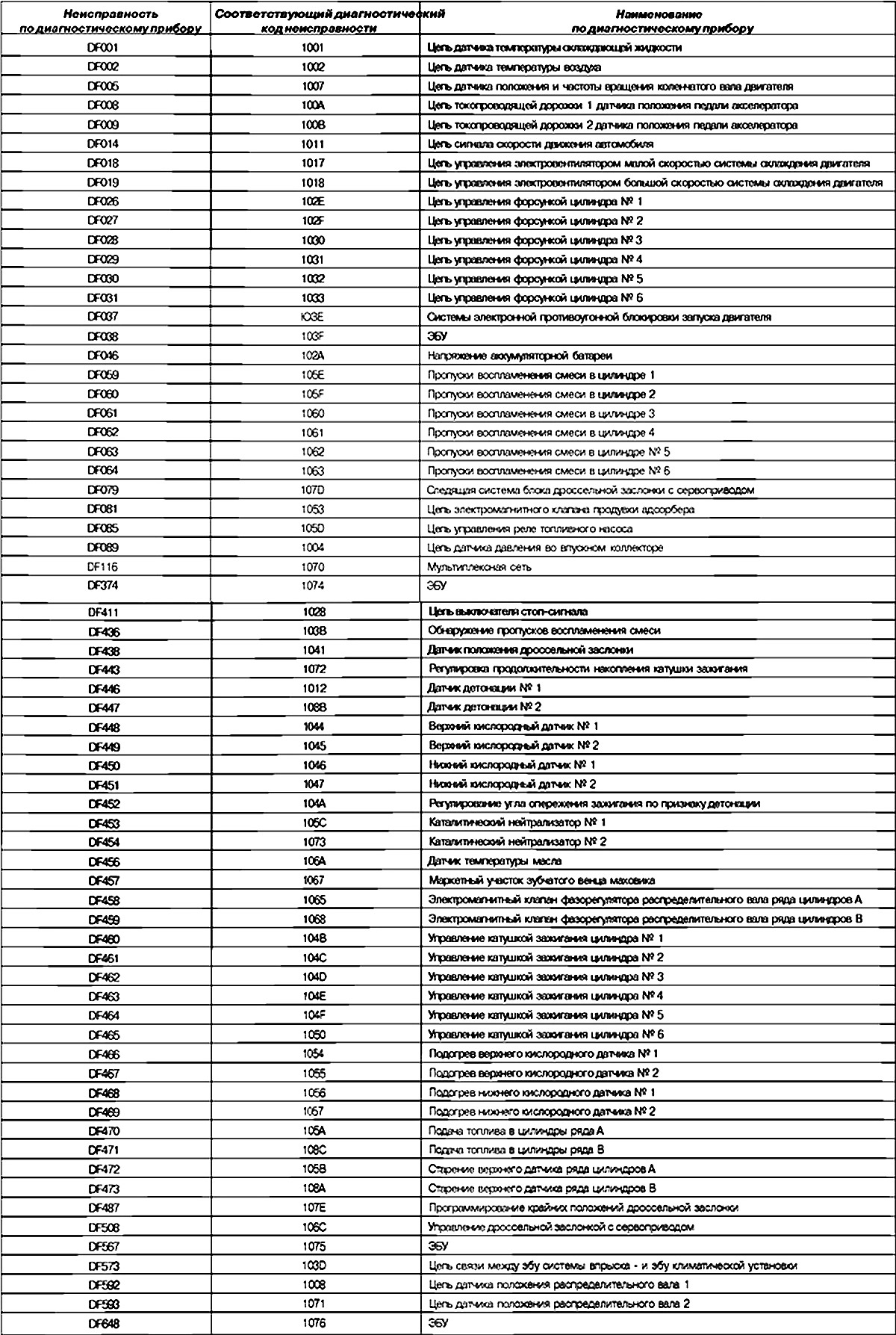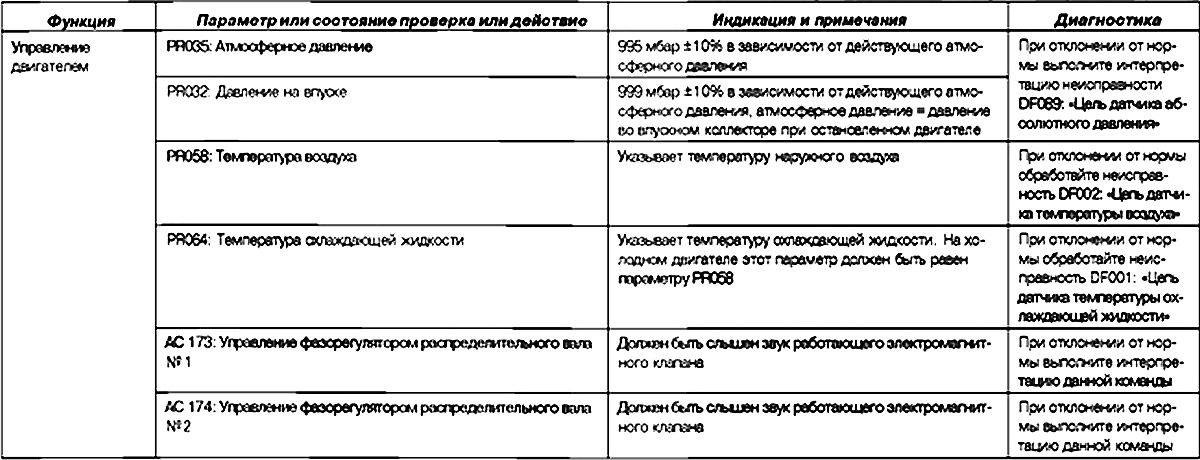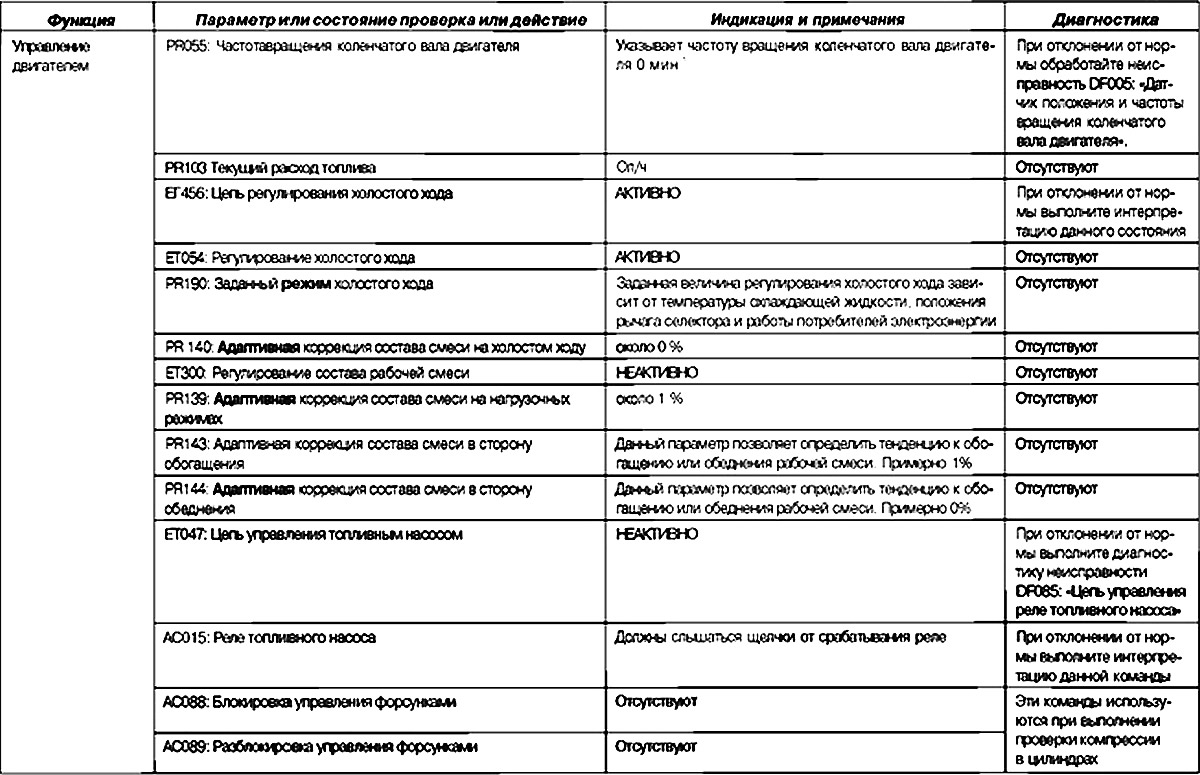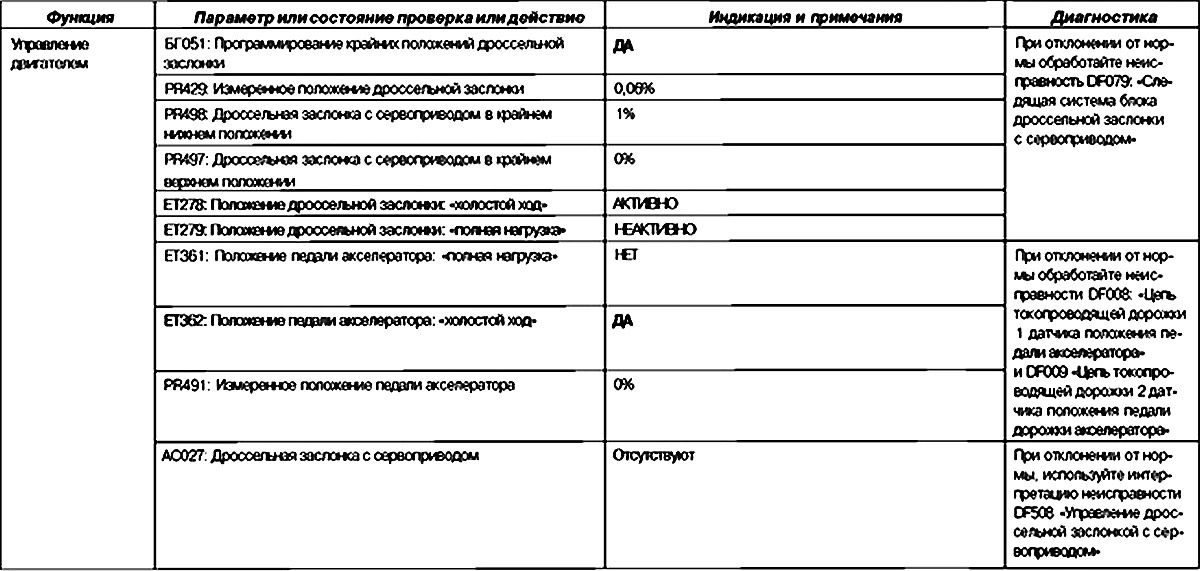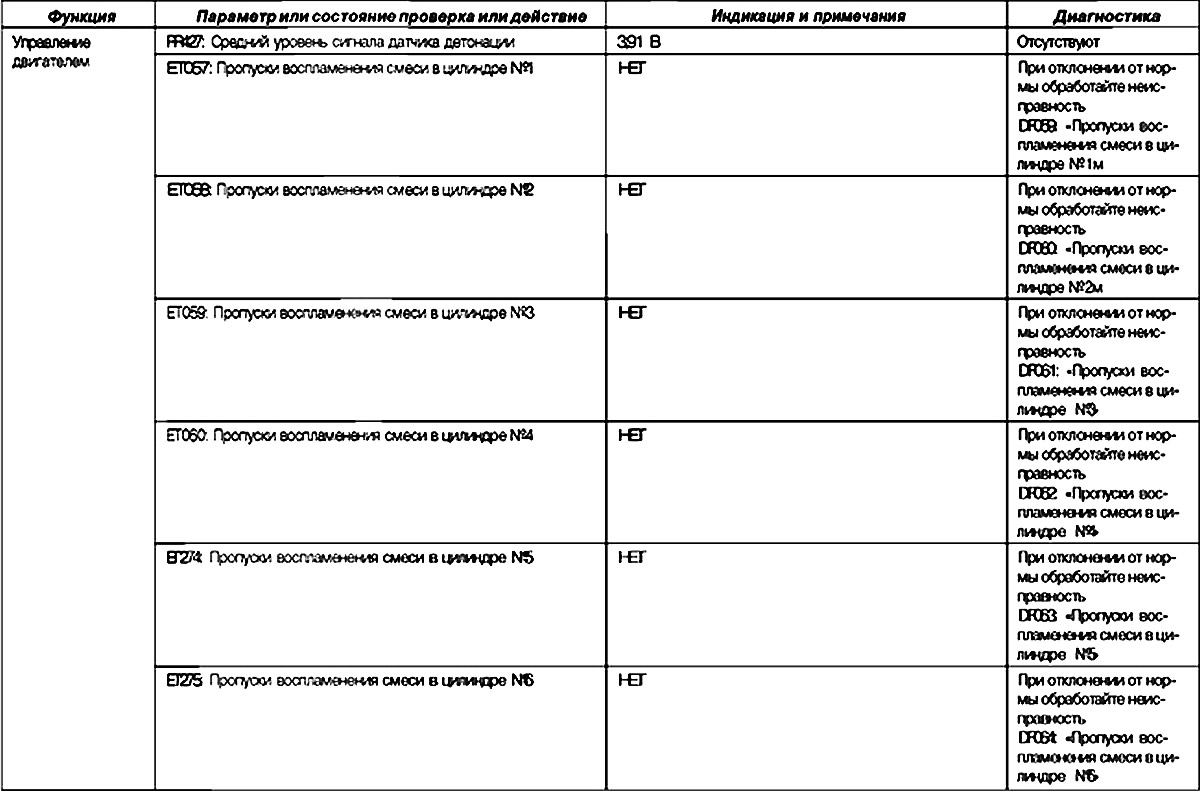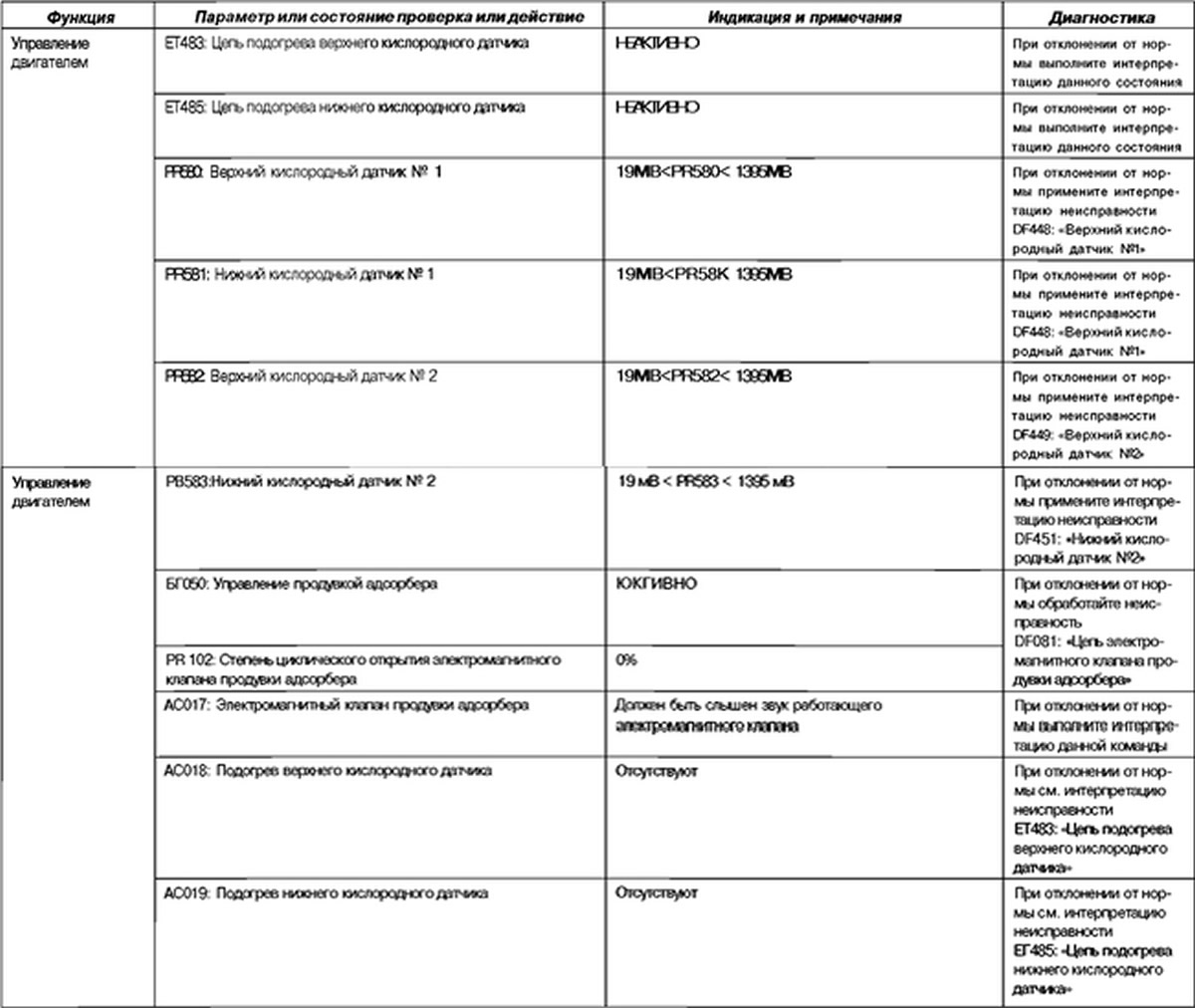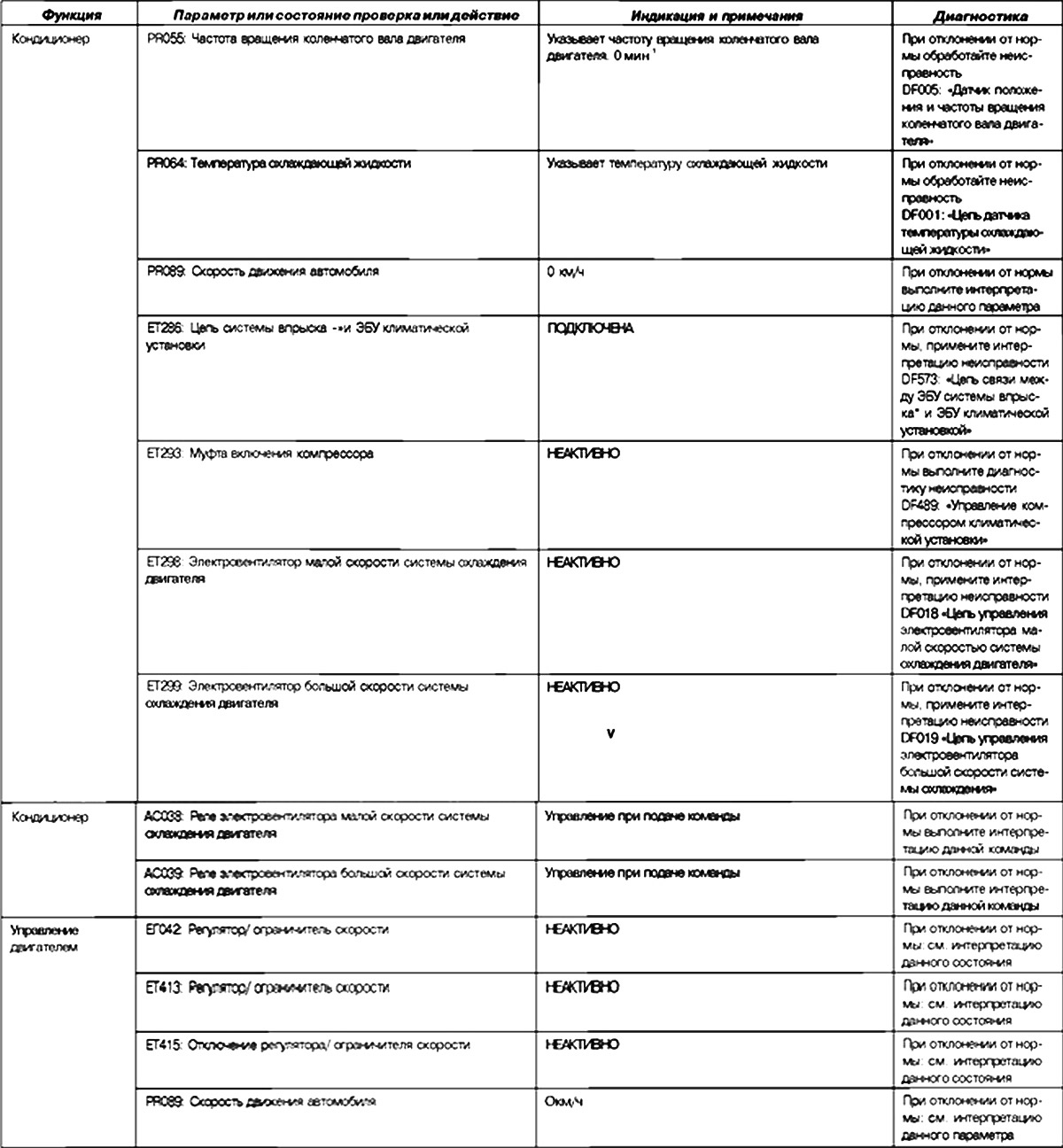No communication with ECU
Test the scan tool on another vehicle.
Check;
- communication between the diagnostic tool and the diagnostic socket of the vehicle (good wiring condition);
- fuses protecting the circuits of the injection system, engine and passenger compartment.
Make sure +12 8 of the battery is present on track 16 and «masses» on track 5 and on track 4 of the diagnostic socket.
Troubleshoot if necessary.
Ignition OFF, disconnect the injection computer connector, connect the universal circuit board and check for open, damaged or shorted wires in order to the injection computer:
- connector A, contact H1 - «weight»;
- connector B, pin L4 - «weight»;
- connector B, pin M4 - «weight»;
- contact J, connector B4 - «+» after the ignition lock;
- connector B, pin H2 - pin 7 of the diagnostic connector;
- connector C, pin L3 - pin 5 of the injection blocking relay;
- connector C, contact M4 - «weight».
Troubleshoot if necessary (see car wiring diagrams).
Engine does not start or starts with difficulty
Note. This fault is only repaired after a complete check with the diagnostic tool (there must be no present or stored faults).
Make sure the starter speed is within the correct range (approximately 250 min-1).
If it's ns like this:
- check the condition of the battery, the absence of traces of oxidation and the tightness of the wire ends on the terminals;
- make sure -bulk» the engine tire is in good condition;
- make sure 8 the wire connecting the battery to the starter is in good condition;
- check the condition of the battery;
- check if the starter is working properly.
Checking the fuel supply
Check for fuel in the tank (Is the fuel level sensor good?).
Make sure the fuel is of the correct quality.
Check for kinked hoses (especially after removal).
Check the condition of the fuel filter and replace it if necessary.
Make sure that the tank connection to the atmosphere is not clogged.
Check that the fuel pump is working properly and that fuel is getting to the fuel rail.
Check the condition of the fuel pressure regulator by measuring the pressure (3.5 bar).
Air supply check
Check the condition of the intake ducts (whether there is air leakage, pinching of the air intake pipe, etc.).
Check that the air filter element is clean and replace the element if necessary.
Disconnect the hose connecting the canister purge solenoid valve to the intake manifold and plug the hole on the manifold to prevent air from being sucked in. If everything is OK now, replace the canister purge solenoid valve.
Checking the ignition system
Check the condition of the spark plugs and replace them if necessary.
Make sure the spark plug type matches the engine model.
Remove the speed and crankshaft sensor and check that that he did not touch the ring gear, (increase in installation clearance). If so, check the condition of the engine flywheel.
Make sure the ignition coils are working.
Check of system of release of the fulfilled gases
Make sure the exhaust system is in good condition.
Remove the catalytic converters and visually inspect the condition of the internal operating element (for no clogging).
Shake the neutralizers to ensure the integrity of the working element (if not, a metallic sound will be heard).
Engine idling malfunction
Note. This fault is only repaired after a complete check with the diagnostic tool (there must be no present or stored faults).
Checking the fuel supply
Check for fuel in the tank (Is the fuel level sensor good?).
Make sure the fuel is of the correct quality.
Check for kinked hoses (especially after removal).
Check the condition of the fuel filter and replace it if necessary.
Make sure. that the tank connection to the atmosphere is not clogged.
Check the condition of the fuel pressure regulator by measuring the pressure (3.5 bar).
Air supply check
Check the condition of the air lines (for the absence of air leakage, pinching of the air intake pipe, etc.).
Check that the air filter element is clean and replace the element if necessary.
Disconnect the hose connecting the canister purge solenoid valve to the intake manifold and plug the hole on the manifold to prevent air from being sucked in. If everything is OK now, replace the canister purge solenoid valve.
Check the tightness of the vacuum brake booster (is there any air suction).
Ignition check
Check the condition of the spark plugs, replace them if necessary.
Check if the spark plugs are suitable for this engine model.
Check the condition of the ignition coils.
Checking the mechanical condition of the engine
Use the dipstick to check the oil level.
Check the compression in the engine cylinders.
Check the valve timing.
Note. Check system performance.
Deterioration of driving qualities of the car
Note. This fault is only repaired after a complete check with the diagnostic tool (there must be no present or stored faults).
Checking the fuel supply
Check for fuel in the tank (Is the fuel level sensor good?).
Make sure 8 that the fuel is of the correct quality.
Check for kinked hoses (especially after removal).
Check the condition of the fuel filter and replace it if necessary.
Make sure that the tank connection to the atmosphere is not clogged.
Check that the fuel pump is working properly and that fuel is getting to the fuel and rail rails.
Check the condition of the fuel pressure regulator by measuring the pressure (3.5 bar).
Air supply check
Check the condition of the intake ducts (whether there is air leakage, pinching of the air intake pipe, etc.).
Check that the air filter element is clean and replace the element if necessary
Disconnect the hose connecting the canister purge solenoid valve to the intake manifold and plug the hole on the manifold. to avoid air leakage. If everything is OK now, replace the canister purge solenoid valve.
Checking the ignition system
Check the condition of the spark plugs and replace them if necessary.
Make sure the spark plug type matches the engine model.
Remove the speed and crankshaft sensor and make sure that it does not touch the ring gear (increase in installation clearance). If so, check the condition of the engine flywheel.
Make sure the ignition coils are working.
Checking the mechanical condition of the engine
Use the dipstick to check the oil level.
Check the compression in the engine cylinders.
Check the valve timing.
Check the condition of the flywheel ring gear.
Make sure the engine cooling system is working properly (that the engine is running in optimal conditions: not too cold and not too hot).
Check of system of release of the fulfilled gases
Make sure the exhaust system is in good condition.
Remove the catalytic converters and visually inspect the condition of the internal operating element (for no clogging).
Shake the neutralizers to ensure the integrity of the working element (if not, a metallic sound will be heard).
Running gear check
Make sure the wheels turn freely (no jamming of brake calipers or bearings).
Check tire pressure and tread condition (is there any swelling).

